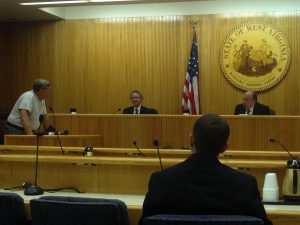Ignoring a storm of protest from concerned local residents, the West Virginia Public Service Commission is set to give the green light to the proposed Mountaineer Gas Pipeline.

In a proposed settlement agreement between the company, the staff of the Commission, the Commission’s consumer advocate and the West Virginia Propane Gas Association, Mountaineer Gas said that the first segment of the pipeline, consisting of approximately 24 miles of distribution trunk line beginning in Morgan County, West Virginia and extending to Martinsburg, West Virginia “should be deemed reasonable and not contrary to the public interest” and that the pipeline will “allow for the provision of adequate, efficient, safe, reliable and reasonably priced natural gas service.”
Mountaineer Gas said that it “has not yet determined the exact location of the proposed pipeline such that environmental studies may be completed and rights of way and easements obtained.”
The company estimated the cost of the first segment to be $30 million.
Mountaineer Gas agreed to “consult with and, where necessary, apply for and obtain approvals from, the US. Fish and Wildlife Service, the West Virginia Division of Natural Resources, the West Virginia Department of Environmental Protection, the West Virginia Division of Culture and History, the U.S. Army Corps of Engineers, and the West Virginia Department of Transportation.”
A Commission hearing on the settlement agreement is set for tomorrow morning in Charleston.
Opponents of the pipeline are organizing to make a stand at Back Creek Valley and the Potomac River.
Mountaineer Gas plans to drill under Back Creek, and will have to go through the U.S. Fish and Wildlife Service to do so. Some environmental activists in the group think that will pose a high hurdle.
Mountaineer Gas is relying on Columbia Gas to build a pipeline under the Potomac and the C&O Canal to bring the gas from Pennsylvania into West Virginia. The company will have to deal with Maryland regulators, federal environmental regulators and the National Park Service to get that done.
